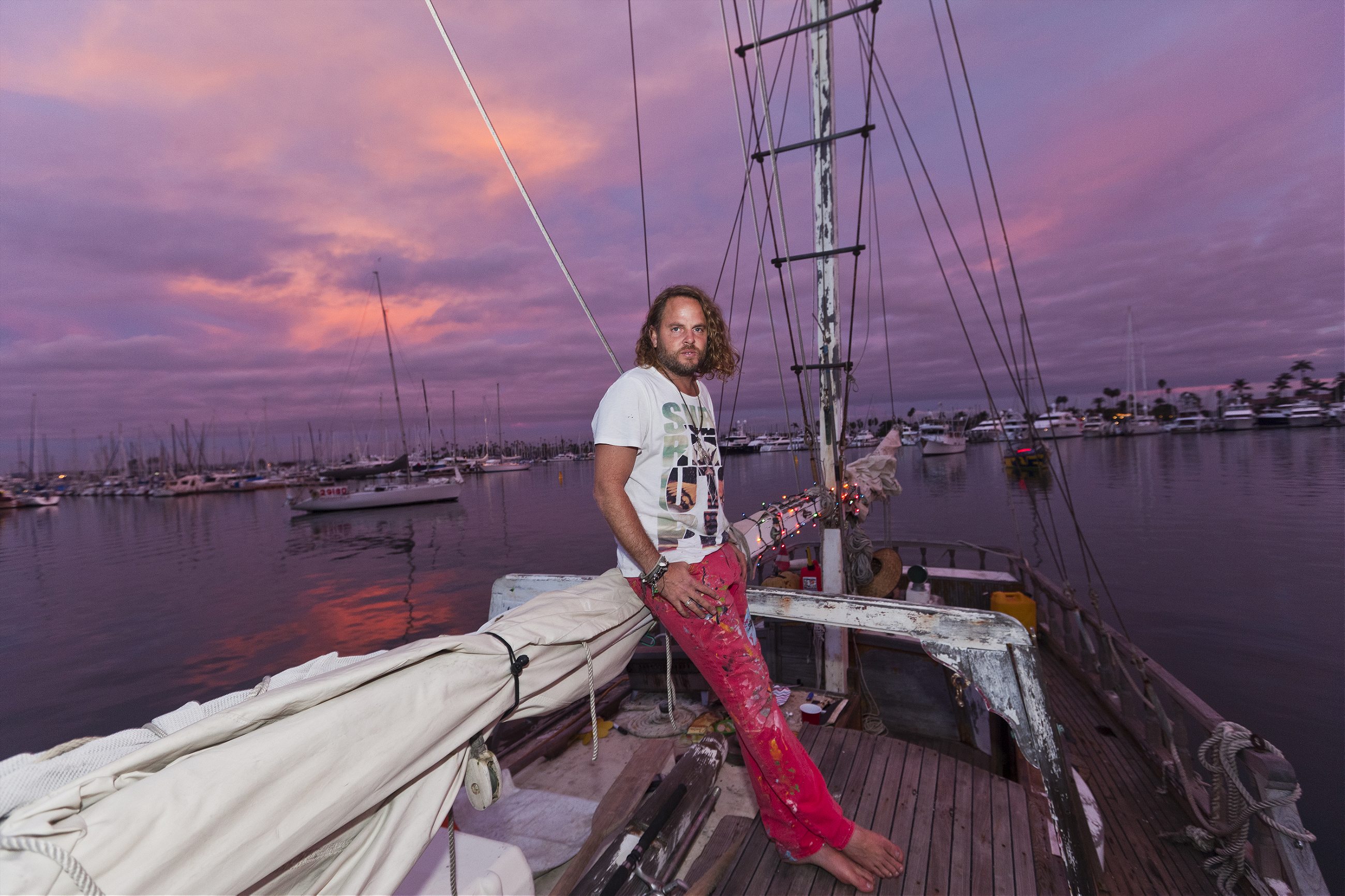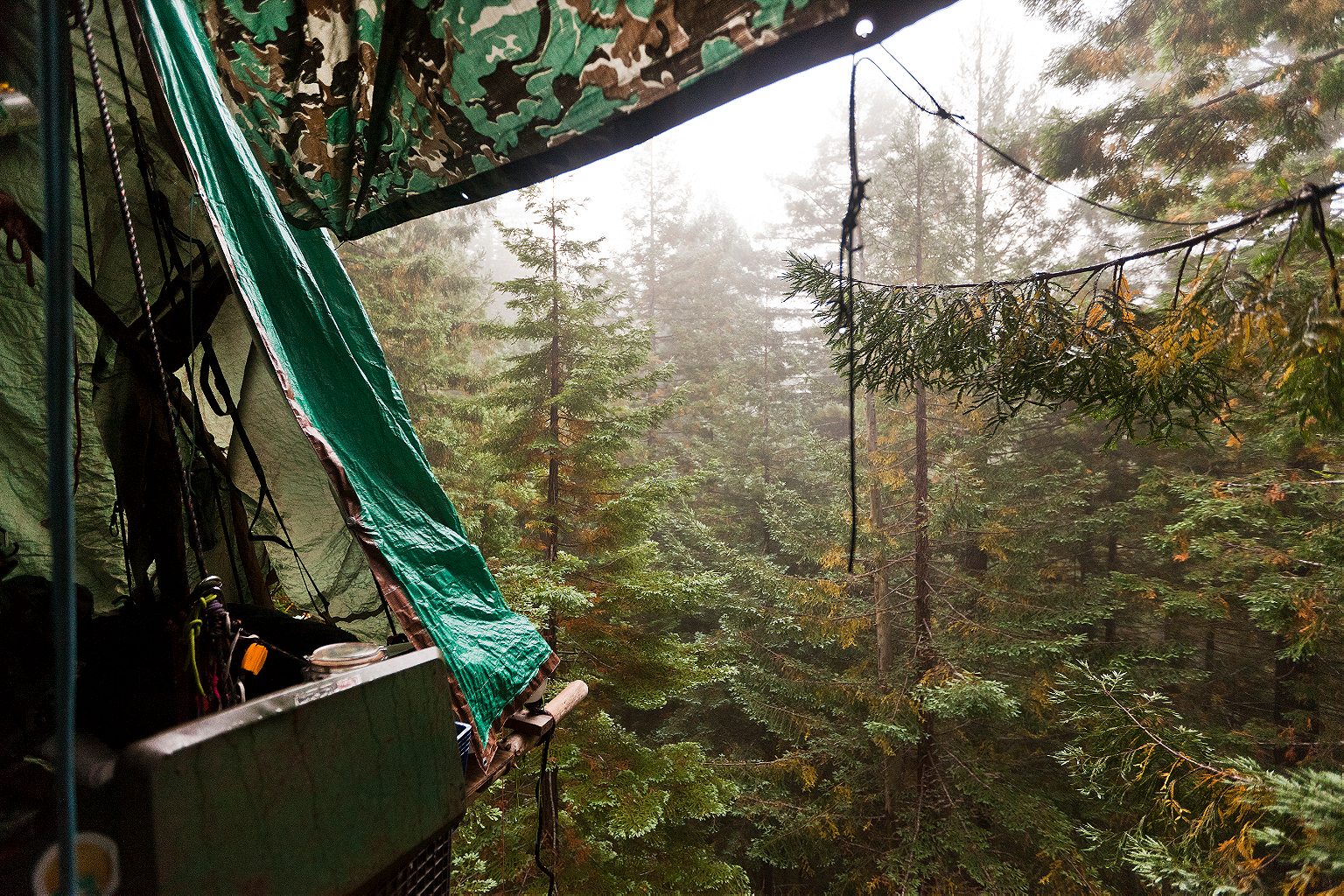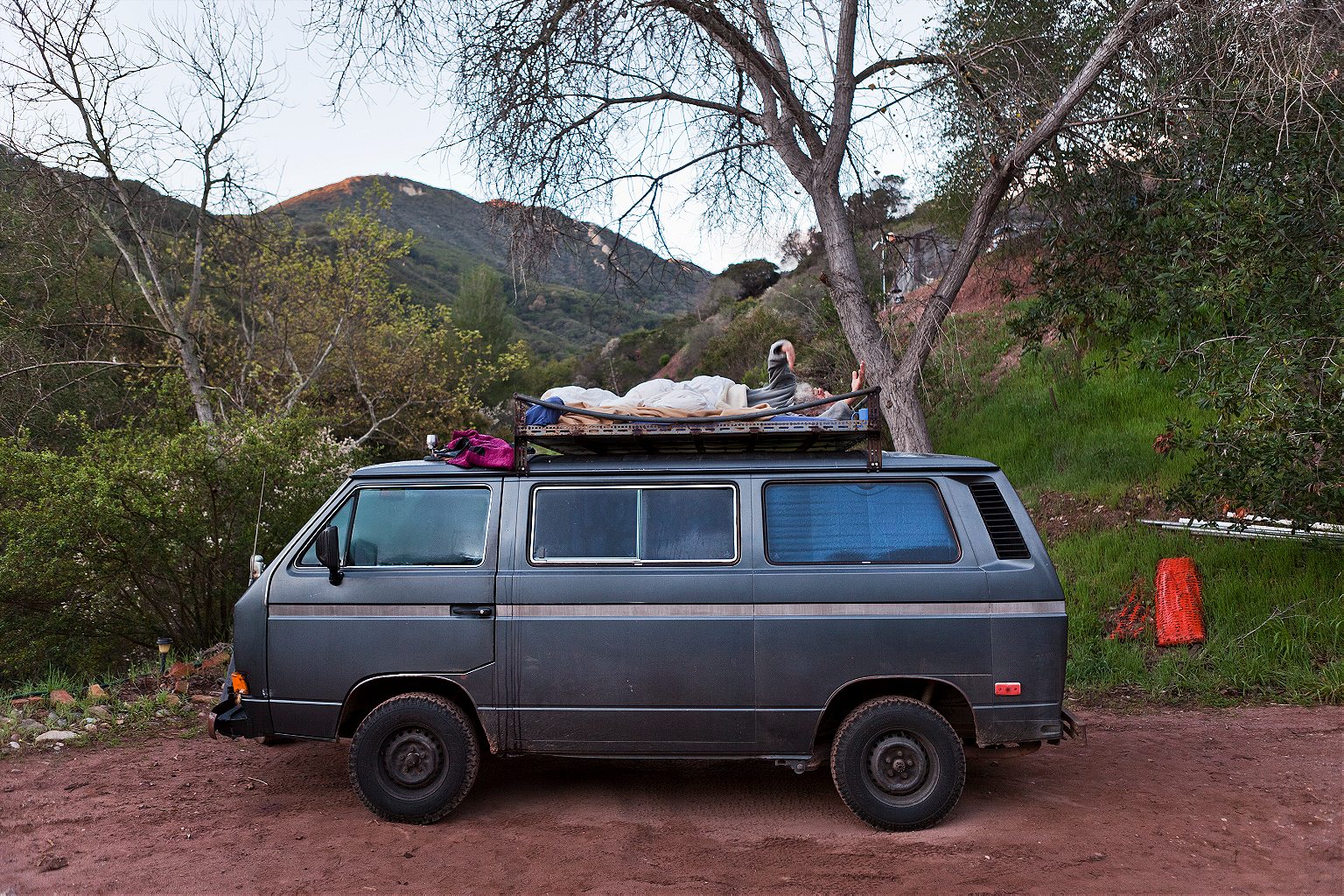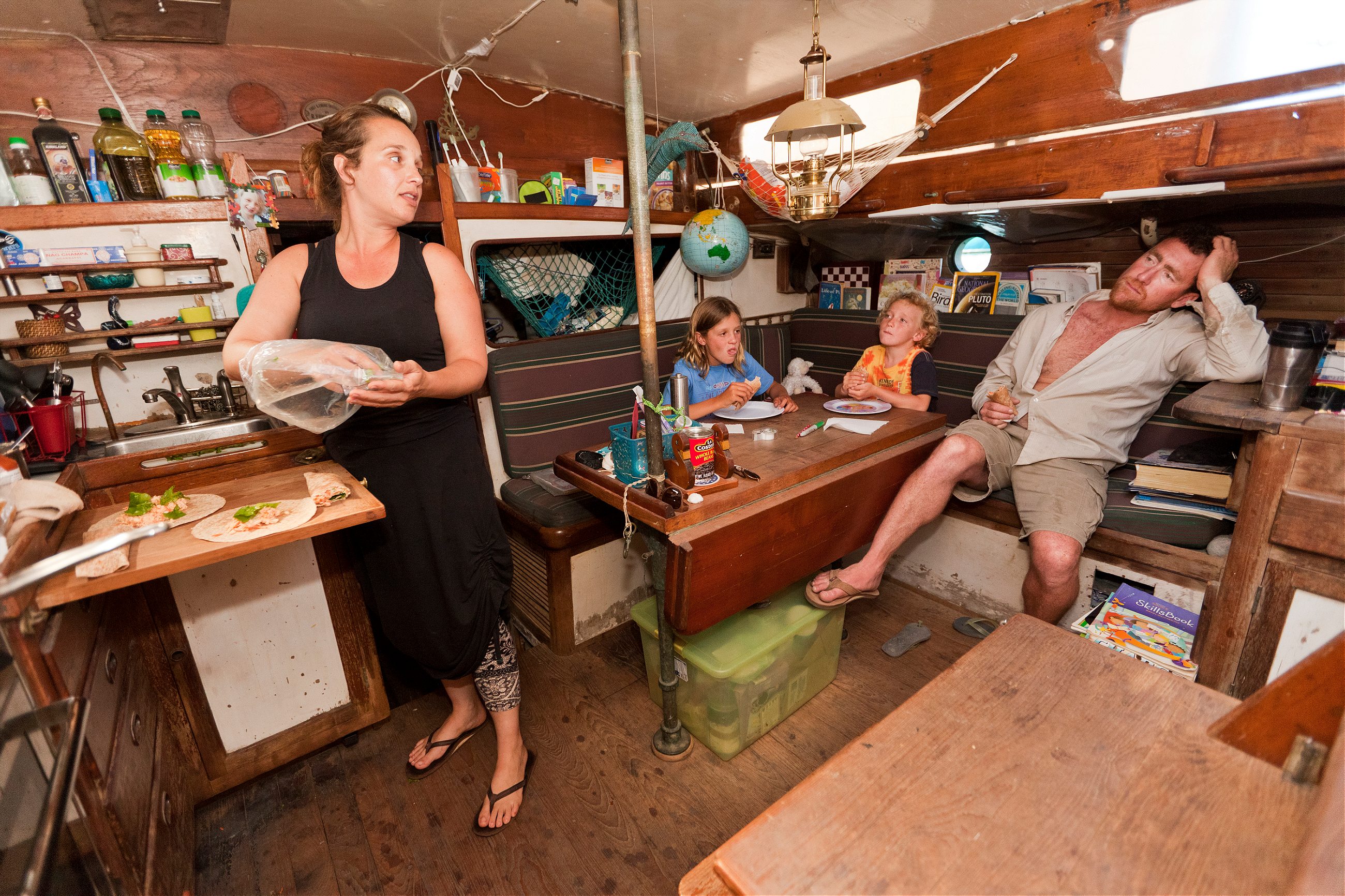Rachel Bujalski, who lived on a boat in Los Angeles to save money, documented the lives of Americans who are affected by the housing crisis and have chosen to live simpler lives.
The American dream of affordable housing is dying in many parts of the country. As urban centers like San Francisco and Chicago see population growth, rapid gentrification and forced displacement are on the rise. Many Americans cannot afford an apartment or a place to sleep, let alone afford a home to buy.
Photographer Rachel Bujalski was trying to cut living expenses in Los Angeles when a friend showed her that it could cost around $400 a month to live on a boat. She went out and bought a 27-footer off eBay and has lived on the water for the past three years. Inspired by a childhood of camping and simplistic vacations in her family’s Wisconsin cabin, Bujalski set out to document the community she found herself living among—and then started photographing a wide range of Americans who were living “off the grid.” Bujalski recently spoke to R&K about how that effort eventually morphed into a project on the American housing crisis.

Roads & Kingdoms: What got you started on this project?
Rachel Bujalski: When I was in Los Angeles, I discovered I could live on a sailboat for a cheaper rent. My friends showed me the boat life and how you could live in LA for 400 bucks a month. So I just went ahead and bought a boat on Craigslist. There, I started photographing other people that were living in their boats.
R&K: Do you still live in a boat?
RB: No, we actually just sold it. I lived in it for three years and then I decided I needed more space to sprawl out. I was doing everything out of the boat. I was editing. I was living entirely on that boot.

R&K: Is there anything you hope other people take away from these images and stories?
RB: I want people to feel that they don’t have to live one way or have to go get a house. I want people to be inspired by it and follow their passion. They can live a simpler life if they want to. They don’t have to have this huge overhead on which they’re spending so much of their paycheck. Maybe you just don’t need that much space.
R&K: With a lot of your new work focusing on the housing crisis, are you seeing any signs of hope for the future?
RB: We’re forced into some of these housing choices and are sugar-coating it with the tiny house movement. But I am hopeful for the future because there are examples of change. Like Scott Wiener, the Senator in California, is making a stand and trying to make more housing affordable. It’s just taking a long time because people are stuck in their bubbles and not looking out and seeing where the problems are. I hope I can highlight some of that with my work.


R&K: Was there anybody in particular you met that surprised you?
RB: The one person that I really relate to is the family in Morrow Bay that lives on a boat moored in the water. They had such a normal lifestyle—they carried one cell phone and four walkie talkies. They all just kind of figured out how to love the uniqueness of their dream that was different than everyone in their community. They stuck together as a family and I really related to that. My dad always taught us to be unique and embrace that uniqueness. That family’s morals were lined up with mine.

R&K: What do you see next for yourself and this project?
RB: I see myself digging deeper into these housing regulations and these bills that are getting passed. I want to focus on those and then follow the effects of this crisis. Diving deeper into LA, into San Joaquin Valley, and into San Francisco, I want to show the effects the housing crisis has had on families from all income levels.
